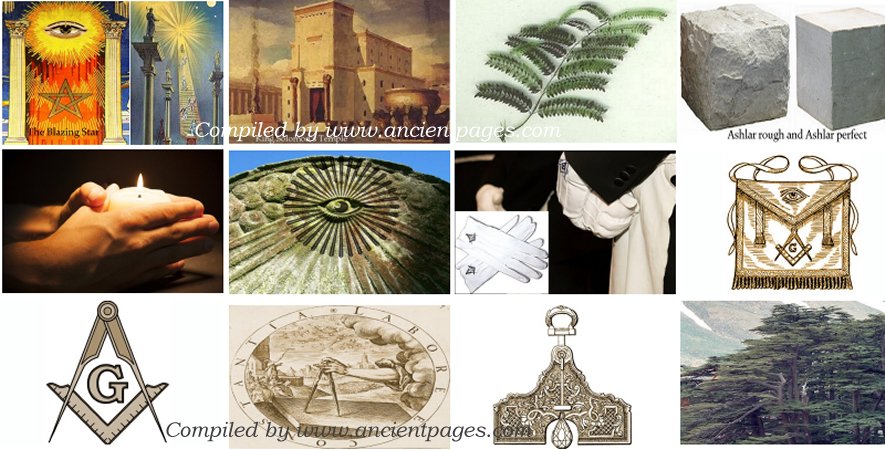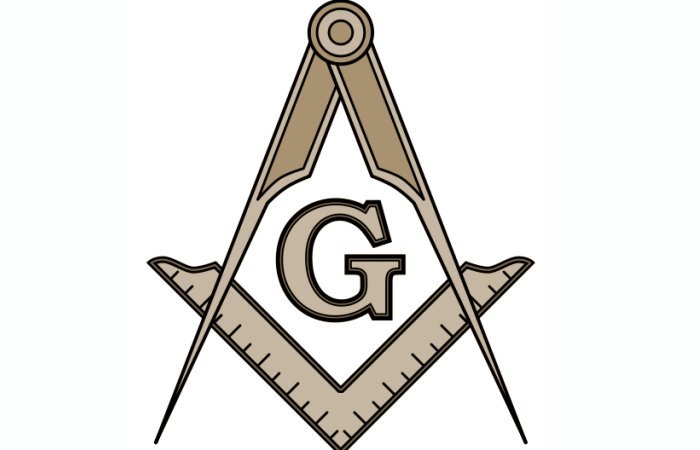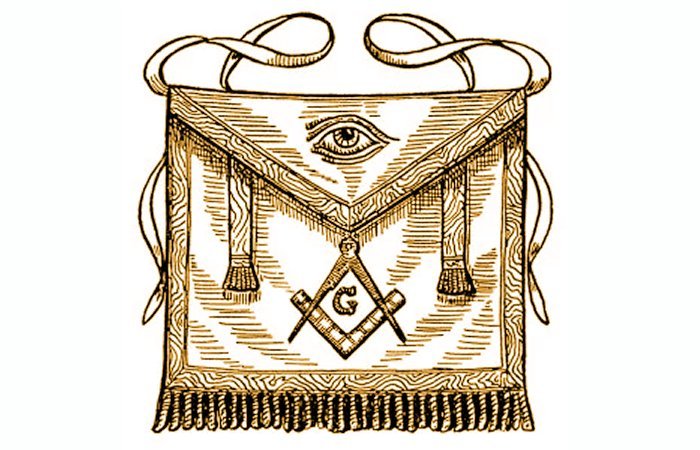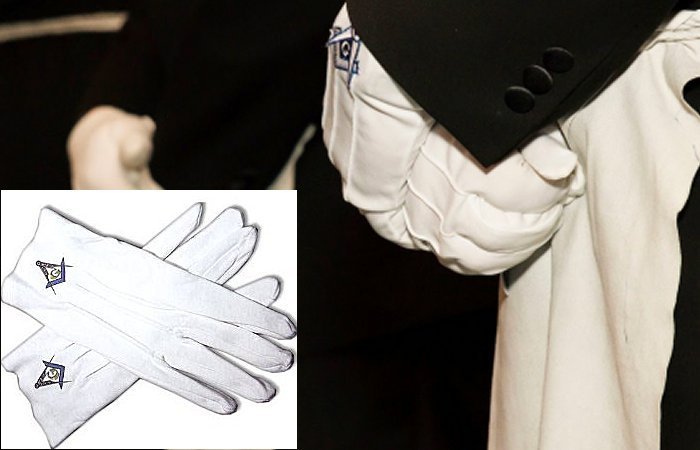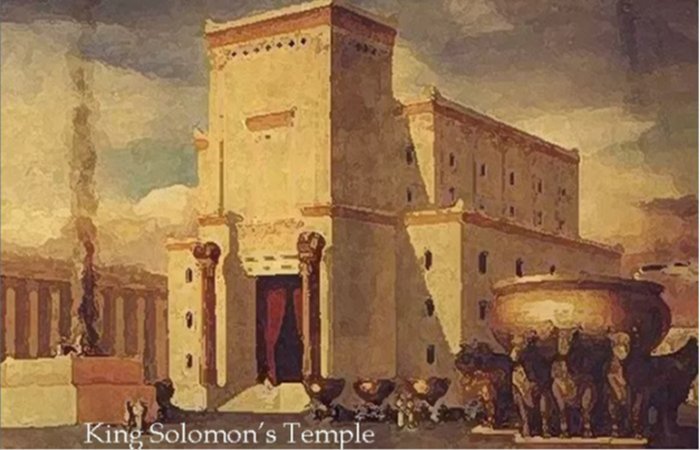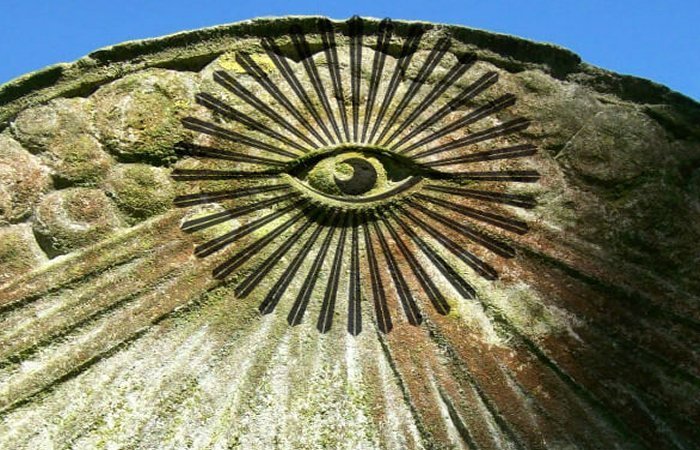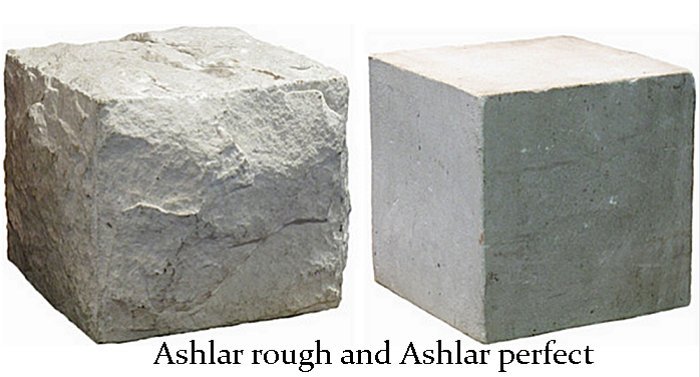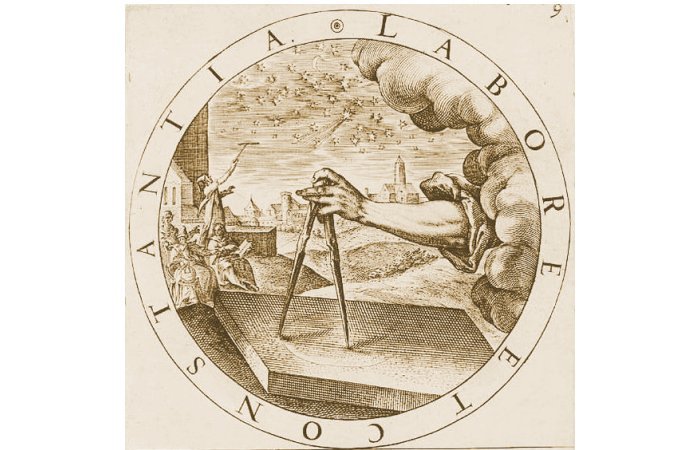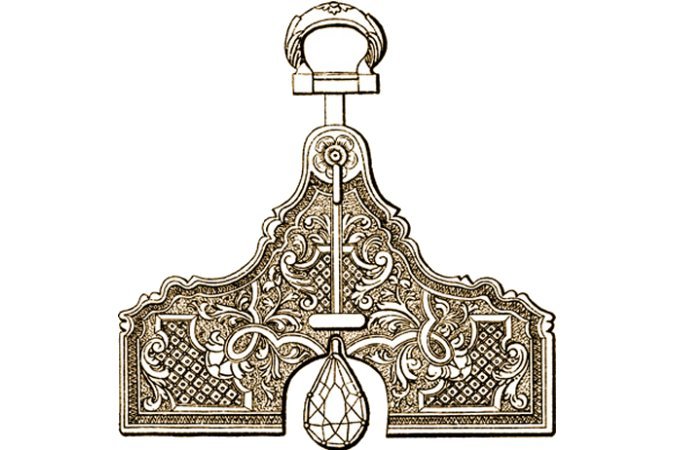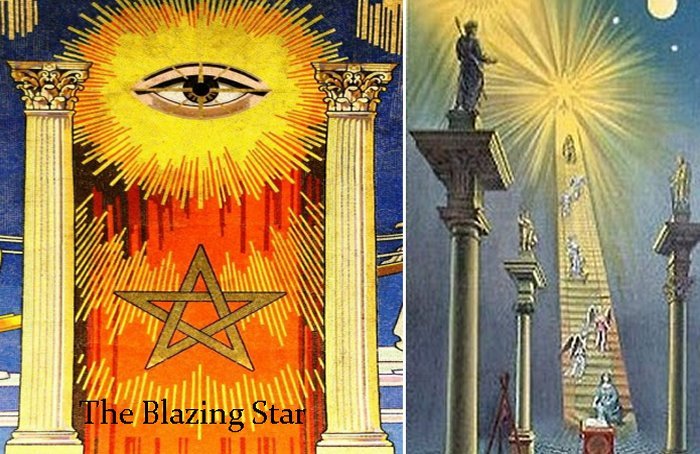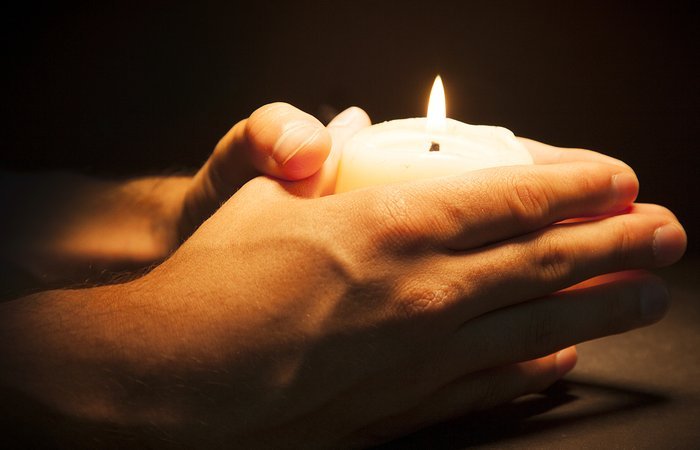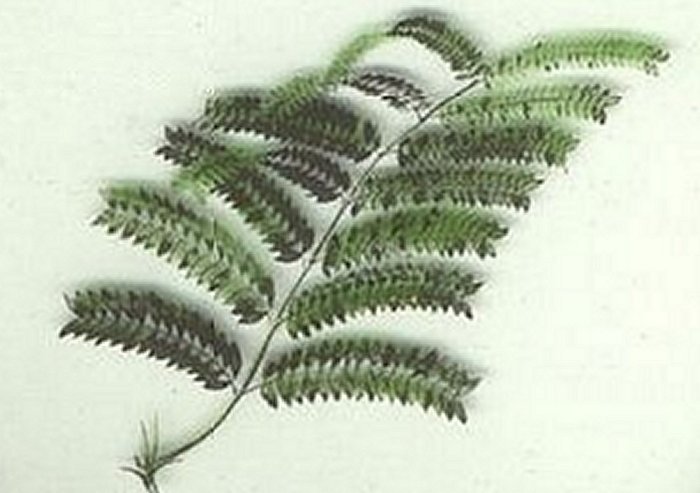12 Masonic Symbols Explained
A. Sutherland - AncientPages.com - Freemasons have several symbols that play a vital role in their rituals.
These symbols can be traced to the beginning of Freemasonry and reflect the Brotherhood’s beliefs and traditions. In this top list, we examine the history and meaning behind some of the most important Masonic symbols.
1. Square and Compasses
It is a widely known symbol of Freemasonry. Both the square and compasses are architect's tools and are used in Masonic ritual as emblems to teach symbolic lessons. It is often seen with the letter "G" in the middle, which stands for “geometry”, a powerful science that helps unravel the mysteries and wonders of nature.
Ancient tradition says the letter "G” placed at the center of the symbol, represents God and Geometry. Belief in God is the primary requirement in order to become a Freemason; no atheist can be a member of this oldest, largest and most widely recognized fraternal organization in the world.
The compass (to draw circles), represents the realm of the spiritual eternity. It is symbolic of the defining and limiting principle, and also of infinite boundaries.
The angle measures the square, the symbol of earth and the realm of the material. The square teaches us to square our actions with all mankind, is also the emblem of the Master of the Lodge because it is the proper Masonic emblem of his office. The square also represents fairness, balance, stability, giving a foundation for building upon.
Together, the compass and square represent the convergence of matter and spirit and the convergence of earthly and spiritual responsibilities. As measuring instruments, the tools represent judgment and discernment.
2. Lambskin Apron
It is the most iconic symbolic emblem of Freemasonry. It is the unique badge of a Mason and it is considered a tool. It’s said to be more honorable than the Roman Eagle or the Golden Fleece, the Masonic apron is literally, the badge of a Mason carried with him into the next existence. Celebrated in poetry and prose, the Lambskin Apron is the initial gift of Freemasonry to a candidate, and at the end of life’s pilgrimage, it is placed on his mortal remains and buried with his body in the grave.
This badge symbolizes regeneration or a new life. It refers to the "pure heart."
It goes back to the days of working Masonry when masons wore a long apron of thick leather to protect them against splinter; of rock and blows from their tools. As a piece of protective clothing, the apron symbolizes hard work and at the same time, it helps create and maintain the strong bond of belonging to the same fraternity.
It is said that the apron refers to the "pure heart," the gloves - to the "clean hands" and both are associated with purification, which – in Freemasonry - was always symbolized by the ablution, which preceded the ancient initiations into the sacred Mysteries.
3. Gloves
Masonic gloves symbolize the 'Works of the Hands'. The gloves given to the candidate for himself are intended to teach him that the acts of a mason should be as pure and spotless as the gloves now given to him. In Europe, they are given to candidates at the same time when they are given the apron; the same custom formerly prevailed in England; now (in Europe and America) the gloves are not involved in ceremony, but they are worn a part of masonic clothing. The tradition of the gloves is very old. In the middle ages, gloves were worn by operative masons to protect their hands from the effects of their work. Édouard Didron (1836-1902), a French stained glass artist and art writer, wrote:
- In the year 1331, the Chatelan of Villaines, in Duemois, bought a considerable quantity of gloves, to be given to the workmen, in order, as it is said, "to shield their hands from the stone and lime."
- In October, 1383, as he learns from a document of that period, three dozen pairs of gloves were bought and distributed to the masons when they commenced the buildings at the Chartreuse of Dijon.
In Masonry, their use was intended to - like the apron - denote the necessity of purity of life.
4. Solomon's Temple
It represents the temple of humanity, knowledge, and improvement; the symbol of the goal and, at the same time, the Freemasonry union itself. It’s the path to the divine. In the tradition of Freemasonry, this Temple is a link in early Christian Cabala and Hermetic thought.
Many believe that philosophy becomes directly linked to the past, present, and future of Freemasonry and to King Solomon’s Temple.
Temple worship is considered progress towards spiritual elevation. There is a difference between a material and spiritual temple that should be constructed in our heart and considered the dwelling place of God.
5. All-Seeing Eye (Eye of Providence)
It is a powerful symbol that has been used for hundreds of years, if not longer. Some scholars trace its history to ancient Egypt and the Eye of Horus. The symbol has been an important Christian symbol that can often be found on stained glass windows of churches.
In the United States, the Eye Of Providence is often associated with conspiracies, the Illuminati, the Vatican, and the Freemasons, who started publicly using the symbol in 1797. The all-seeing eye of God and is a reminder that humanity's thoughts and deeds are always observed by God (who is referred to in Masonry as the Great Architect of the Universe).
Usually, the Masonic Eye of Providence has a semi-circular glory below it and is (sometimes) enclosed by a triangle.
Read more about the Eye Of Providence
6. Ashlars
Ashlar rough and Ashlar perfect are not just two pieces of stone but a clear representation of what we’ve and what we hope to be. They symbolize Man's moral and spiritual life.
Ashlars are a representation of the very beautiful symbol. The rough and perfect ashlars bear the same relation to each other as ignorance does to knowledge, death to life, and light to the darkness. Ashlar rough (rude, natural stone), which masonically, is a symbol of men’s natural state of ignorance and a symbol of the profane world. Ashlar perfect is already prepared (hewed, squared, polished and smooth) and as such it’s used in the building. It’s a symbol of the state of perfection attained by means of education.
In essence, in Freemasonry, it means that by means of education and the acquirement of knowledge, a man, who begins as Rough Ashlar (an imperfect stone) improves the state of his spiritual and moral being and becomes like Perfect Ashlar and makes the final journey to the Grand Lodge Above. He may leave behind a reputation as a wise counselor, a pillar of strength and stability, a Perfect Ashlar on which younger Masons may test the correctness and value of their own contribution to the Masonic order.
7. Labor
Labor is not punishment but the necessity and nobility, which creates a better society. This is also the reason why Freemasons wear various symbols representing tools used for labor on the cloth.
By working, a man shows respect and appreciation to God. To perform well-assigned tasks is a man's highest duty and labor should give a person the greatest happiness and internal satisfaction. To Freemasons labor is worship.
8. Level
One of the working tools of a Fellow Craft. It is a symbol of the equality of station of all men before God.
The level measures the levelness of horizontal surfaces. It reminds Masons that they’re all living their lives upon the level of time.
See also:
12 Ancient Egyptian Symbols Explained
10 Ancient Celtic Symbols Explained
11 Ancient Sacred Indian Symbols Explained
9. Blazing Star
“The Blazing Star in our Lodges, we have already said, represents Sirius, Anubis, or Mercury, Guardian and Guide of Souls. Our Ancient English brethren also considered it an emblem of the Sun. In the old Lectures they said: “The Blazing Star or Glory in the center refers us to that Grand Luminary the Sun, which enlightens the Earth, and by its genial influence dispenses blessings to mankind…” (A. Pike)
“The Blazing Star in the center is said to be “an emblem of Divine Providence, and commemorative of the star which appeared to guide the wise men of the East to the place of our Savior’s nativity.” He goes on to say, “[the Blazing Star or Glory in the center refers us to that grand luminary, the Sun, which enlightens the earth, and by its genial influence dispenses blessings to mankind.” They called it also in the same lectures, an emblem of Prudence.”
The word Prudentia means, in its original and fullest signification, Foresight; and, accordingly, the Blazing Star has been regarded as an emblem of Omniscience, or the All-Seeing Eye, which to the Egyptian Initiates was the emblem of Osiris…”
10. Light
Light is a significant Freemason symbol representing truth and knowledge. When a candidate goes through the initiation and understands the truths of Masonry, he is considered enlightened. Though many ancient civilizations worshipped the Sun, Freemason's light is not material but a representation of knowledge.
The term leads back to the Sanskrit ruc, meaning ‘shine’.
11. Cedar
It’s a symbol of eternity (cedar is a long-lived and powerful tree reaching 40 m, from the pine family). Freemasonry is often a symbol of the Lebanese cedar from the Lebanon Mountains (cedrus libani, cedar of Lebanon), which is considered the national tree of Lebanon, appearing on the Lebanese flag, also known as the "cedar land".
This cedar was used to build the Temple of Jerusalem (3 Kings 5,6,7) and the Ark of the Covenant.
It is often mentioned in the Bible, and it often appears in masonic legends, especially for higher grades.
12. Acacia
To Freemasons, Acacia is a symbol of the immortality of the soul. By its evergreen and unchanging nature, this sacred plant reminds a person of that we will all strive to follow a better spiritual path within us. Our spirituality is as an emanation from the Grand Architect of the Universe, and as such, it can never die. Acacia plays an important part in the ritual of Freemasonry and the plant is also a symbol of innocence.
Written by A. Sutherland - AncientPages.com Senior Staff Writer
Copyright © AncientPages.com All rights reserved. This material may not be published, broadcast, rewritten or redistributed in whole or part without the express written permission of AncientPages.com
Expand for referencesMackey A. G. The Symbolism of Freemasonry
Beresniak D. Symbols-of-Freemasonry
More From Ancient Pages
-
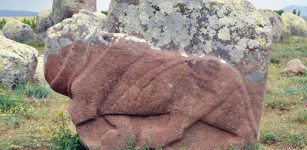 Mystery Of Gigantic Lion Sculptures Dated To The Hittite Era
Archaeology | Apr 14, 2016
Mystery Of Gigantic Lion Sculptures Dated To The Hittite Era
Archaeology | Apr 14, 2016 -
 Beautiful Legend Of The Christmas Rose – A Symbol Of Love And Hope
Christmas Traditions | Dec 26, 2024
Beautiful Legend Of The Christmas Rose – A Symbol Of Love And Hope
Christmas Traditions | Dec 26, 2024 -
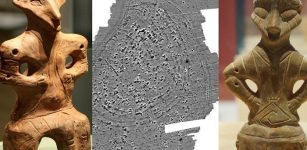 Huge Unknown 7,000-Year-Old Vinca Settlement Found In Serbia?
Archaeology | Apr 30, 2024
Huge Unknown 7,000-Year-Old Vinca Settlement Found In Serbia?
Archaeology | Apr 30, 2024 -
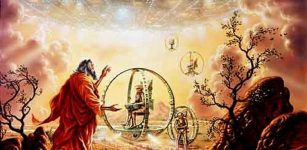 God’s Personal Flying Vehicle Described In ‘The Book of Ezekiel’
Biblical Mysteries | Jul 18, 2019
God’s Personal Flying Vehicle Described In ‘The Book of Ezekiel’
Biblical Mysteries | Jul 18, 2019 -
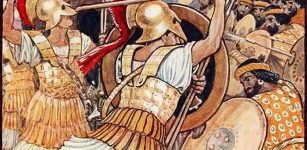 On This Day In History: Battle Of Marathon Was Fought – On Sep 12, 490 BC
News | Sep 12, 2016
On This Day In History: Battle Of Marathon Was Fought – On Sep 12, 490 BC
News | Sep 12, 2016 -
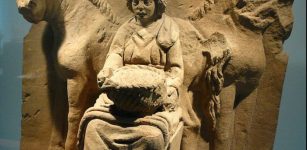 Epona – One Of The Oldest And Widely Known Celtic Deities
Celtic Mythology | Feb 26, 2018
Epona – One Of The Oldest And Widely Known Celtic Deities
Celtic Mythology | Feb 26, 2018 -
 Karahunge – ‘Speaking Stones’ With Secrets – Remarkable Prehistoric Structures Of Armenia
Places | Jun 4, 2020
Karahunge – ‘Speaking Stones’ With Secrets – Remarkable Prehistoric Structures Of Armenia
Places | Jun 4, 2020 -
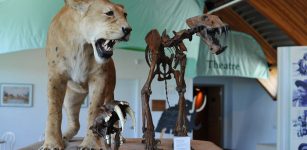 Remains Of Ancient Predators Shed Light On How Humans Did Or Didn’t Find Food
Archaeology | May 2, 2022
Remains Of Ancient Predators Shed Light On How Humans Did Or Didn’t Find Food
Archaeology | May 2, 2022 -
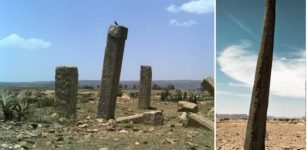 1,000-Year-Old Church Walls Unearthed In Ethiopia By Polish Archaeologists
Archaeology | Apr 26, 2020
1,000-Year-Old Church Walls Unearthed In Ethiopia By Polish Archaeologists
Archaeology | Apr 26, 2020 -
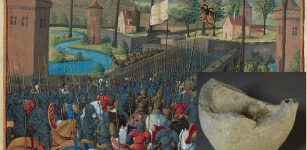 Ancient Hand Grenades: Explosive Weapons In Medieval Jerusalem During Crusades
Archaeology | Apr 26, 2022
Ancient Hand Grenades: Explosive Weapons In Medieval Jerusalem During Crusades
Archaeology | Apr 26, 2022 -
 Curse Of The Scottish Fyvie Castle That Survived Generations
Featured Stories | May 5, 2020
Curse Of The Scottish Fyvie Castle That Survived Generations
Featured Stories | May 5, 2020 -
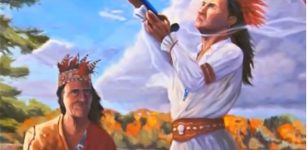 Hiawatha And The Legendary Great Peacemaker – Native American Heroes Who Founded The League Of The Iroquois
Featured Stories | Feb 25, 2019
Hiawatha And The Legendary Great Peacemaker – Native American Heroes Who Founded The League Of The Iroquois
Featured Stories | Feb 25, 2019 -
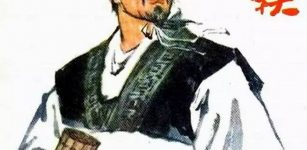 ‘Reforms of Shang Yang’ – Location Of Ancient Yueyang – Confirmed
Archaeology | Jan 25, 2016
‘Reforms of Shang Yang’ – Location Of Ancient Yueyang – Confirmed
Archaeology | Jan 25, 2016 -
 Excavations of the Aşıklı Mound, Cappadocia , Turkey
Civilizations | Aug 22, 2015
Excavations of the Aşıklı Mound, Cappadocia , Turkey
Civilizations | Aug 22, 2015 -
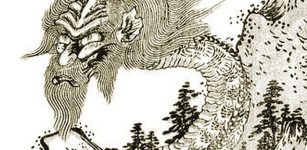 Legend Of The Candle Dragon That Could Lighten The Darkest Gate Of Heaven
Chinese Mythology | Jan 15, 2016
Legend Of The Candle Dragon That Could Lighten The Darkest Gate Of Heaven
Chinese Mythology | Jan 15, 2016 -
 Remains Of An Ancient Seaport In Asini, Greece Discovered By Underwater Archaeologists
Archaeology | Mar 12, 2025
Remains Of An Ancient Seaport In Asini, Greece Discovered By Underwater Archaeologists
Archaeology | Mar 12, 2025 -
 Few Witches Were Executed In Wales In The Middle Ages – Why?
Featured Stories | Oct 29, 2024
Few Witches Were Executed In Wales In The Middle Ages – Why?
Featured Stories | Oct 29, 2024 -
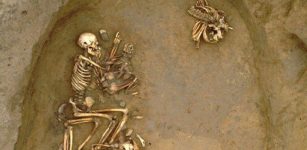 Ancient DNA Has Traced Large-Scale Migrations Into Bronze Age Britain And The Emergence of The Celtic Language
Archaeology | Dec 30, 2021
Ancient DNA Has Traced Large-Scale Migrations Into Bronze Age Britain And The Emergence of The Celtic Language
Archaeology | Dec 30, 2021 -
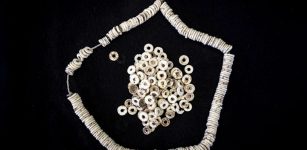 Ostrich Eggshell Beads Reveal 50,000-Year-Old Social Network Across Africa
Archaeology | Dec 21, 2021
Ostrich Eggshell Beads Reveal 50,000-Year-Old Social Network Across Africa
Archaeology | Dec 21, 2021 -
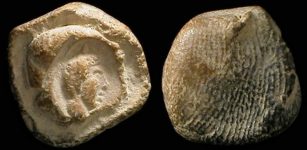 Fascinating Ancient History Of Fingerprints
Featured Stories | Jul 7, 2022
Fascinating Ancient History Of Fingerprints
Featured Stories | Jul 7, 2022

